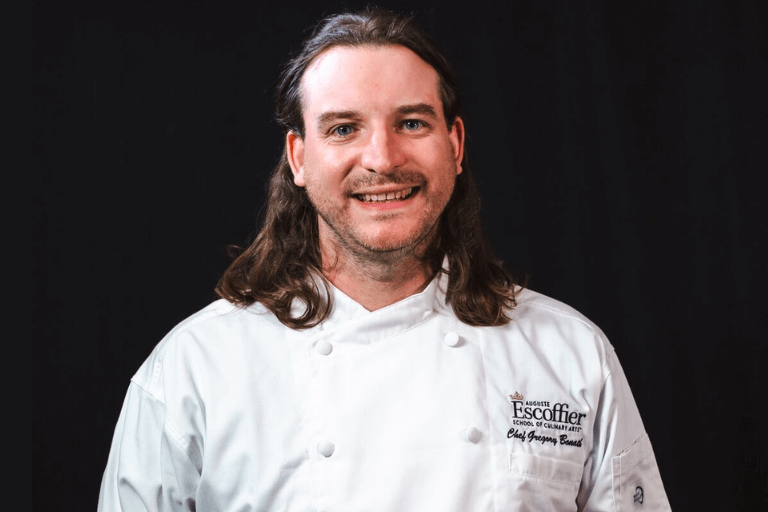Listen to This Article:
What do the words “fine dining” bring to mind for you? Beautifully plated delicacies? An elegant ambiance? Special occasions with family and friends?
If you also thought “nuanced rules of dining etiquette,” you wouldn’t be alone.
It’s true that there are different expectations for how to behave in a fine dining restaurant. And if you’re not accustomed to those rules, the whole idea of fine dining can feel a little daunting. Fortunately, the rules aren’t all that difficult to understand or follow—meaning that, with a little preparation and a little self-awareness, you can feel comfortable the next time you find yourself in a high-end restaurant.
So, whether you’re completely new to the world of fine dining or just looking to clarify a few things, let’s take a closer look at the rules of etiquette.
What Is “Fine Dining”?
Before getting into the etiquette of fine dining, let’s first talk about what fine dining even is. In a word, it comes down to sophistication—in every aspect of the experience. The restaurant’s ambiance is generally luxurious and refined. The service is attentive and professional. And the food, of course, is of the highest quality—carefully planned, expertly prepared, and thoughtfully presented.
In this guide, we’ll focus on the etiquette common to Western (and specifically American) fine dining traditions; if you’re ever traveling abroad, be sure to read up on local etiquette as rules can vary widely.
The Origins of Fine Dining
In the West, the origins of fine dining are often traced to French cuisine, with 19th-century chefs like Marie-Antoine Carême being among the first to begin to codify and teach the techniques and recipes that previously were only found in the dining rooms of the aristocracy, making sophisticated dining available to a wider population.
The chef who arguably had the greatest impact on expanding the practice of fine dining was Georges Auguste Escoffier, who, in the late 19th and early 20th century, was almost single-handedly responsible for modernizing Western cuisine.

Auguste Escoffier left a major legacy—which includes helping to spread the tradition of fine dining.
Escoffier’s gourmet restaurants in luxury hotels such as the Ritz Paris and the Savoy in London elevated the significance of fine dining to a global audience, and the techniques and recipes he passed down to subsequent generations contributed to the creation of a new class of professionally trained chefs capable of providing elegant dining experiences for their patrons.
Fine Dining Today
In the past, “fine dining” may have been more narrowly defined as a highly formal experience only available to the elite of society. Today, the concept has evolved to include a wider range of cuisines, atmospheres, price points, and expectations for dress and conduct. But the common thread that forms the cornerstone of any restaurant worthy of a Michelin star has remained sophistication—a dining experience that is clearly and intentionally elevated above more casual alternatives.
With that said, don’t let all this talk of sophistication deceive or intimidate you. Because, when it comes down to it, fine dining is fundamentally the same as any other dining experience—sitting down with people you care about to have a pleasant time sharing food and drink. Sure, there are some different expectations. But don’t treat them like mandates you need to memorize and execute flawlessly in order to enjoy yourself. Instead, think of etiquette instructions as advice that will help you fit in and feel more comfortable in a fine dining setting.
Now, let’s get on with the advice!
Preparing for the Evening
A pleasant fine dining experience actually begins before you even reach the restaurant, with preparations that can help ensure you meet the restaurant’s expectations and feel comfortable during your meal.
Making and Managing Reservations
Ordinarily, you need to make reservations at a fine dining restaurant. In some cases—such as times of day or year when business is slow—it may be appropriate to just show up at a fine dining restaurant without a reservation. But, for the most part, you’re going to want to make a reservation when you’re planning your evening.
Fine dining restaurants are typically in high demand, so you may not be able to guarantee a seat without one. And at some restaurants, they may not even allow you to sit without a reservation. So, take a few minutes to call or go online to set up your reservation first.
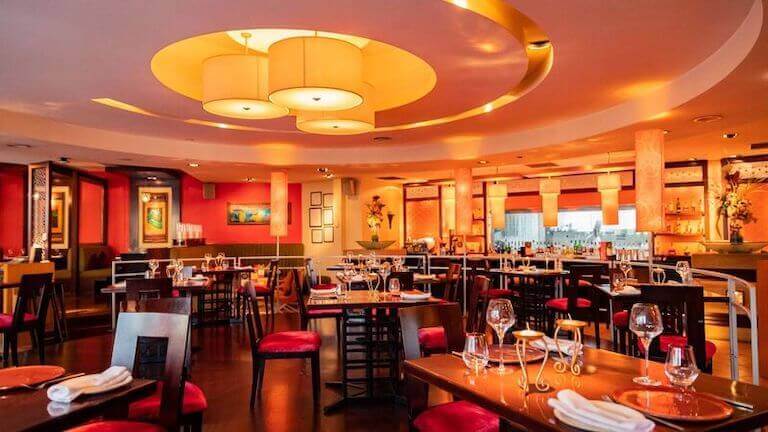
Seats at fine dining restaurants are often in high demand, making reservations important.
But that’s not the end of the story. Once you’ve made your reservation, you should also be prepared to manage it in case any changes arise. If you need to change the number of guests, or if you even need to cancel your reservation, do so as early as possible. This way, you can avoid potential fees for late cancellations—and besides, letting the restaurant know is also just the polite thing to do.
On the day of your reservation, if it seems like you or other members of your party are going to be late, call the restaurant to let them know. This is not just the decent thing to do—some restaurants will only hold your reservation for ten or fifteen minutes beyond your time, so by calling you can save yourself the trouble of going all the way to the restaurant only to find that your table has been released to someone else.
The Dress Code: Check the Photos
You’ll also need to spend a little time planning your wardrobe prior to your meal. Fine dining restaurants will typically have at least some expectation for how guests should dress—and some places may strictly enforce their rules, to the point that you might be turned away if you show up wearing the wrong thing.
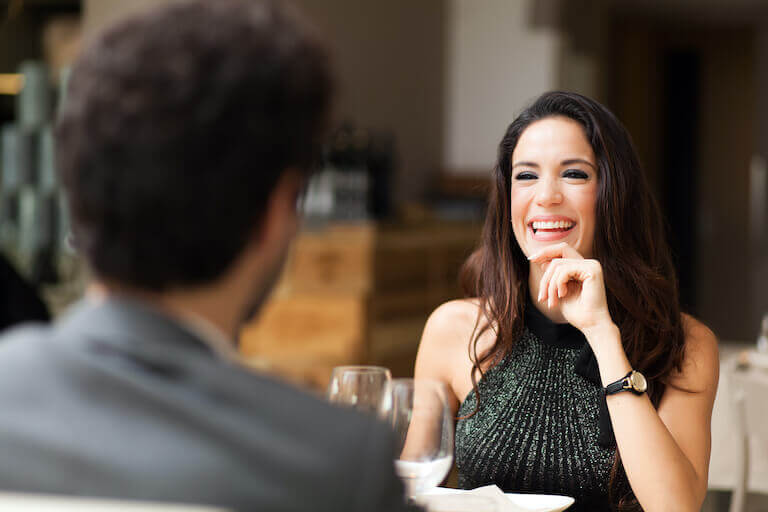
Fine dining restaurants typically have dress codes; find out what the expectations are so that you can dress appropriately.
Once again, don’t be intimidated by this possibility. Spending a few minutes online or on the phone should clear it up. Check the restaurant’s website to see if they explicitly list their dress code; if not, you may be able to view pictures to get a sense of the ambiance—and, by extension, the expectation for how you should dress, with more luxurious settings typically requiring classier attire. Searching for online reviews and other guests’ photos can be a good way to check into this, too.
However, the most foolproof way to determine a restaurant’s dress code is to simply pick up the phone and call. They’ll be able to tell you exactly what to wear, removing any doubt from this decision.
Arriving and Ordering
Fine dining is fundamentally the same as any other table service restaurant—you sit down, you order, and you eat. But there are a few differences to be mindful of that can help you navigate the meal comfortably and tactfully.
Deciphering the Table Setting
The first thing you may notice as you arrive at your table is that it may be set up a bit differently from other restaurants you’ve visited. Specifically, there may be a lot more stuff than you’re accustomed to. Being aware of the intended use of every part of your place setting can help you get oriented at the table, so that you can focus on having a good time rather than worrying about which fork to use.
- Cutlery: Your place setting may include cutlery for every course of the meal. The general rule of thumb is to work from the outermost cutlery inward, toward your plate, with each course; for example, you would use the smaller, outermost fork for your salad course, while later using the larger, innermost fork for your entree. Dessert cutlery is typically laid above your plate.
- Glassware: Your place setting may also include several glasses—a water goblet, separate glasses for red and white wine, maybe a champagne flute, and possibly even more. Leave these glasses in place at first, even if you know you don’t intend to use some of them; don’t turn them upside down, place your hand over them, or move them around the table. Later, your server will ask you if you intend to use these glasses, and will remove them from the table if you do not.
- Napkins: Fold your napkin in half and lay it across your lap. In a moment, we’ll touch on the appropriate way to use your napkin during the meal; for now, just keep it on your lap—or, if you have to leave the table, place it on the seat of your chair rather than on the table.
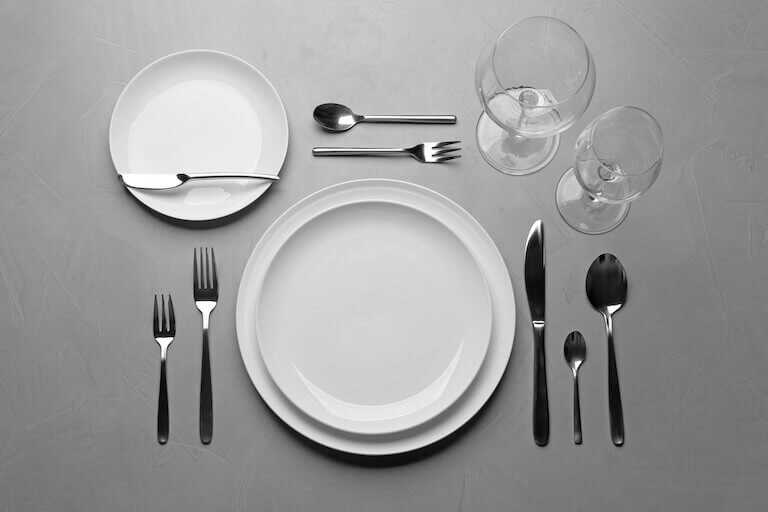
Formal place settings typically include several glasses, dishes, and pieces of cutlery.
Ordering Your Meal
It’s best if everyone in your party orders the same number of courses; it helps servers time when to bring dishes to the table, and it’s more pleasant if everyone in the group is eating at the same time, rather than having some people wait and watch others while they finish that melon and burrata appetizer they insisted on getting. Talk it over with your party and decide how you want to approach this, so that everyone is on the same page.
Your server will likely be able to recognize when you’re ready to order and come over to your table when the time is right. But if you’re ready to order and they aren’t around, simply close your menu and lay it on the table; this will signal that you’re ready.
If you do need to get your server’s attention, try to make eye contact, or, at most, raise your hand slightly (no higher than your shoulder, though, and don’t wave). That will be more than sufficient; raising your voice, snapping, or making other gestures is unnecessary and rude. Your servers are professionals, and they know how to recognize when they’re needed.
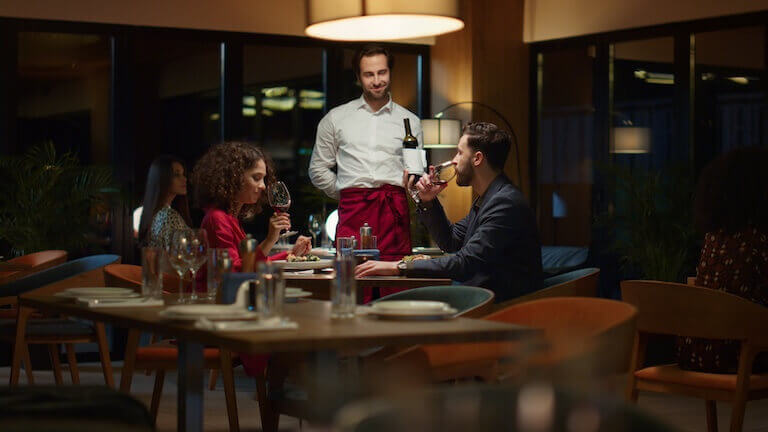
Servers are professionals, and know how to help contribute to your special evening.
Lastly, unless it is explicitly encouraged on the menu, avoid making special requests for changes to dishes. Menus in fine dining restaurants are meticulously designed, and it’s rude to request changes simply based on your preference. Recognize that you are visiting this restaurant to experience the flavors and dishes the chef is capable of preparing; if you must have fries instead of turnip puree with your filet mignon, maybe you should have stayed home and cooked it for yourself.
The exception, of course, is if you have allergies or other health-related dietary restrictions; in that case, let your server know so that they can ensure you don’t receive anything that could harm you.
Navigating the Wine (and Cocktail) Menu
Pairing drinks with food is a fundamental part of the dining experience no matter what setting you’re in, and fine dining is no exception.
While high-end wine and cocktail menus might make you feel like you’re being presented with a test you forgot to study for, just remember that the whole point is to enjoy yourself, not to make the “right” ordering decision.
Wine Etiquette
Don’t be bashful about asking for recommendations from your server or from the restaurant’s sommelier; this is quite literally their job, and they’ll be happy to help you make an order you’ll be pleased with. If you know what you typically like to drink, start there, and they’ll help guide you toward something that suits your palate; you can also mention what you ordered (or are thinking about ordering), and they’ll be able to help select a wine that’s suited to your meal.

Ask your server (or the sommelier) for wine recommendations to suit your meal.
If you’d prefer to stick to a certain price range, you don’t have to say that out loud; not only is it a bit clumsy, it’s also unnecessary. Instead, just point to a wine on the wine list that’s in your price range and say something along the lines of, “I was looking at something like this one.” Your server will understand that you’re telling them, “This is my price point,” and will make suitable recommendations.
When your server brings the wine to the table, they’ll present you with a small serving to taste before pouring the bottle. This is not an opportunity for you to try the wine to see if you like it; it’s strictly to give you the opportunity to make sure that the wine hasn’t spoiled in the bottle. The only reason you should send back a bottle of wine at this point is if there is truly something wrong with it.
*Information may not reflect every student’s experience. Results and outcomes may be based on several factors, such as geographical region or previous experience.
Cocktail Etiquette
As with the food menu, a lot of care and attention went into the creation of the restaurant’s cocktail menu. It’s proper etiquette to show respect for that care and intentionality by ordering items directly from the menu, without making special requests.
If you do order off-menu, stick to classic cocktails or basic combinations that are easy to communicate. Under no circumstances should you attempt to order that cocktail you had “at that one restaurant in Philadelphia two years ago” that you think might have been called “the Zeno’s Paradox” (especially if the only thing you remember is that it tasted kind of fruity)!
As with wine, you shouldn’t send back a drink just because it’s not your favorite—only do so if there’s really something wrong with it, like it’s not what you ordered or was clearly made incorrectly.
Enjoying Your Meal
As the meal finally begins, remember—in spite of all the proper etiquette and elegant surroundings, this is still a meal, and it’s meant to be enjoyed! Don’t let propriety scare you out of having a good time with your dinner companions. People observe these rules to maintain a respectful environment and ensure everything goes smoothly, not to take the joy out of cuisine; on that note, here are some tips to observe during the meal.
Basic Fine Dining Manners
The fundamental rule of fine dining might as well be “Have respect for your surroundings.” Try to make sure your conduct is consistent with what’s happening around you; if you’re ever in doubt about what to do, just do as others are doing (or at least don’t do anything that’s out of line with what others are doing).
But you don’t want to spend your whole meal looking around to see how other people are behaving, so remember some of these basic “dos and don’ts” to help your evening go off without a hitch.
- Do wait until everyone has been served to begin eating. This applies during every course. It’s the polite thing to do, and it also helps servers maintain consistent timing for each course.
- Do eat at the same pace as everyone else; again, this is the polite, sociable thing to do, and it’s helpful to your servers.
- Do taste your food before seasoning it. Seasoning food before you taste it is rude to the chef, and you may be doing yourself a disservice by throwing off the flavor profile of your meal.
- Do place “discards” (like bones or other inedible things) together in the upper left of your plate; never place such things on the tablecloth, in your napkin, or anywhere else.
- Do keep the edges of your plates clean, so that it’s easier for servers to take them away.
- Don’t be noisy. By all means, have a good time with your companions—but you shouldn’t be including everyone else in the dining room in your conversation.
- Don’t say you have to go to the bathroom; it’s not polite or necessary. Just excuse yourself, and leave the table.
- Don’t use your phone. Hopefully, this is self-explanatory.
- Don’t pick up your knife or fork if you drop it; your server is trained to come pick it up for you and give you a new one. This is done for safety and sanitary reasons. The one exception, however, is if the cutlery lands in a place where someone might step on it. In that case, do pick it up.
- Don’t stack plates on the table as you finish. It may seem helpful, but your server would prefer to pick them up individually.
*Information may not reflect every student’s experience. Results and outcomes may be based on several factors, such as geographical region or previous experience.
How to Handle Your Place Setting
Your cutlery serves as a sort of silent code to servers so that they can tell whether you’re ready to have your dishes cleared away or whether you’re still eating. If you put your knife and fork down, either momentarily or because you have to leave the table, place them crossed or pointing together in a V shape; this signifies that you are not done. If you are done, place your knife and fork side-by-side, either pointing straight up and down on your plate or at a diagonal between the 10 o’clock and 4 o’clock positions.
Beyond that, once you’ve started using your cutlery, don’t put it back on the tablecloth; it should stay in your hands or resting on your plate at all times.
Always place whatever glasses you are using back in the same place, ensuring they are within arm’s reach for the server to refill. Never hold a glass for the server to refill, even if you are currently holding it when they approach you; this is a great way for accidents to happen. Instead, put it down on the table and let them refill it there.
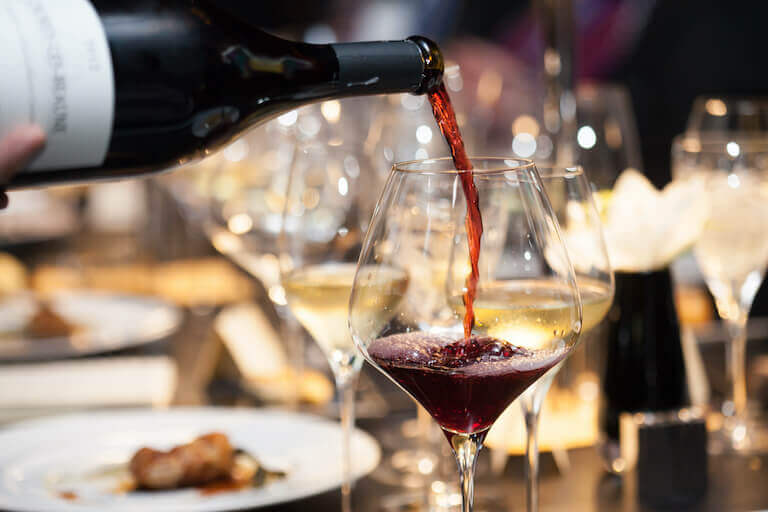
Restaurant servers are prepared to help make sure your evening goes smoothly.
Leave your napkin folded in your lap unless you are leaving the table (in which case, remember, you should place it on your chair) or you are using it to clean your face. When doing so, dab rather than wipe, and use the inside of the napkin so that when you place it folded back on your lap, it hides the marks (and also doesn’t get your clothes dirty). When the meal is over, place your napkin on the table—not on the plate.
Wrapping Up the Evening
Maintaining good etiquette continues up to and beyond the end of the meal. Ensure that everyone—your companions and restaurant staff alike—end this evening on the right note by remembering this advice.
Basic After-Dinner Etiquette
First, no matter how much you enjoyed your meal and how much of it is left on your plate, do not ask for takeaway. Not only is this considered gauche, it’s unlikely to be satisfying when you creep down to the fridge for a midnight snack later; the food served at fine dining establishments is usually best when it’s eaten freshly prepared, as intended.
Be sensitive that you don’t overstay your welcome by lingering at your table for an excessively long time. Now, this is typically less of a concern than it is at more casual restaurants that depend on high turnover in order to make a profit; fine dining restaurants, on the other hand, are usually more accommodating of longer, more leisurely meals.

Enjoy your meal, and don’t feel rushed to leave as soon as you’re done—but do be sensitive to the fact that your table may be booked for another seating later in the evening.
That said, if your reservation was on the earlier side and you can tell that the restaurant is busy, odds are there’s another reservation for your table later in the evening. Don’t let this awareness make you feel rushed—instead, just read the room and try to pick up the signal if you get the feeling it’s time to go.
This should go without saying, but after the meal, be sure to express your thanks to everyone who contributed to your experience; this includes your host, first and foremost, but also your servers, the sommelier, and the maître d’. A lot of work (and expense) goes into creating an evening like this, and you should always make sure that everyone involved knows that you appreciate it.
Paying and Tipping
The number one rule of paying for any fine dining meal is that whoever organized the meal should pay for it. It is this host’s prerogative to ensure that no guest feels that they’re in a position where they need to pony up at the end of the evening.
If you’re the host, you can avoid this by giving your card to the maître d’ or server before the meal; this completely eliminates any uncertainty or awkwardness, and ensures that everyone can focus on enjoying the meal right up until the end of the night.
Finally, there’s the tip. This one is simpler than people like to make it. Unless something egregiously bad happened during the meal—like the server lit your grandmother’s hair on fire—always tip a minimum of 20% on the total amount of the check, including tax. If service was great, tip more. That’s all there is to it. A huge amount of work goes into creating a memorable experience for you, the guest, and your tip should reflect that.
There’s More to Explore in the World of Food and Drink!
Great food can be had on any budget, but fine dining brings a certain level of excitement and sophistication to a meal that transcends the typical dining experience. While the idea may seem intimidating at first, with a knowledge of the basic etiquette of fine dining, you can feel comfortable in this refined environment and enjoy the pleasure of an elevated culinary experience.
Whether you’re a food enthusiast or an aspiring culinarian, culinary school can offer the opportunity to expand your knowledge of culinary principles, techniques, and traditions. You could even study Hospitality and Restaurant Operations Management, all of which may give students the chance to take their culinary skills and knowledge to the next level.
If you’re interested in seeing what culinary school could offer you, contact us to start the conversation. Financial aid may be available to those who apply and qualify, meaning this experience could be more attainable than you might think.

